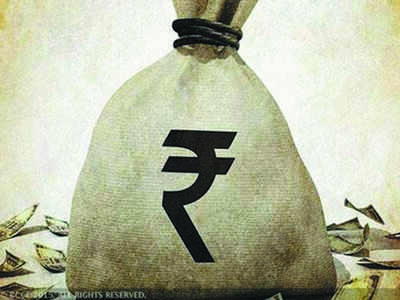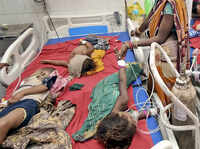
PATNA: The Modi 2.0 government has presented its first Budget after the NDA came back to power in May, registering a mammoth victory in the general elections. The preliminary reading of the Union finance minister Nirmala Sitharaman's speech suggests that the Union Budget 2019 is very indicative and doesn't give any specific direction to the economy.
The first key takeaway is that the Budget is ambitious in making provisions for overall infrastructural development in the country. The finance minister has proposed large-scale and long-term investment plans for the railways, a comprehensive restructuring of the National Highways Programme, PMGSY, and 'One Nation One Grid' (for power sector), among others.
Her Budget speech emphasised the New Education Policy, 2019, which is said to bring in a massive shift in the course of higher education in India. The finance minister has also proposed to constitute a 'National Research Foundation' for boosting and streamlining research grants available with the ministries.
The Budget proposes to focus more on agricultural infrastructure and encourage private entrepreneurship to add value to agricultural products, especially bamboo, timber and khadi.
Given Bihar's comparative advantage in food processing, any major investment in this sector will definitely benefit agriculture and allied activities in the state.
The proposed construction of 1.95 crore houses under PMAY-G between 2019 and 2022 will definitely benefit a village-dominated state such as Bihar with 33.7% of BPL population.
Grants for social sectors, including electricity, cooking gas, drinking water and housing, have been proposed in the Budget to benefit the marginalised. But a word of caution is needed here. The economy must be inclusive and grow fast to avoid indefinitely continuing the social sector schemes. Bihar is likely to suffer the most as the finance minister hasn't proposed much for the agricultural sector. The health of the state's agricultural economy is deeply affected by rural infrastructure and agricultural credit.
Even though the state has tried hard to improve on this count, Centre must bolster the state's efforts in this direction. Rs 80,000 crore for rural infrastructure will surely fall way short of its target. There is no proper attention given to agricultural credit.
One must not forget that Bihar is a classic case of neglect when you talk of dissolving regional inequalities. Though the state's need for 'Special Status' is still a demand, and the Budget hasn't granted that, yet a slew of proposed investment measures can do something substantial in pulling the state out of this pit called regional inequality. So Bihar obviously has a reason to be upset.
Another important announcement comes in the form of proposed reforms in the MSME sector, which might add some fillip to the existing unincorporated sector in Bihar. It is said that "Rs 350 crore has been allocated in FY 2019-20 for 2% interest subvention for all GST-registered MSMEs on fresh or on incremental loans." Moreover, loans of up to Rs 1 crore will be approved to MSMEs within 59 minutes.
It was further announced that the pension benefits to three crore retail traders will be provided under the Pradhan Mantri Karam Yogi Maan Dhan Yojana. All these measures will definitely help a large section of population working in the informal sector in Bihar.
(The writer is a noted economist and member secretary of Patna-based ADRI. Views expressed are personal)
The first key takeaway is that the Budget is ambitious in making provisions for overall infrastructural development in the country. The finance minister has proposed large-scale and long-term investment plans for the railways, a comprehensive restructuring of the National Highways Programme, PMGSY, and 'One Nation One Grid' (for power sector), among others.
Her Budget speech emphasised the New Education Policy, 2019, which is said to bring in a massive shift in the course of higher education in India. The finance minister has also proposed to constitute a 'National Research Foundation' for boosting and streamlining research grants available with the ministries.
The Budget proposes to focus more on agricultural infrastructure and encourage private entrepreneurship to add value to agricultural products, especially bamboo, timber and khadi.
Given Bihar's comparative advantage in food processing, any major investment in this sector will definitely benefit agriculture and allied activities in the state.
The proposed construction of 1.95 crore houses under PMAY-G between 2019 and 2022 will definitely benefit a village-dominated state such as Bihar with 33.7% of BPL population.
Grants for social sectors, including electricity, cooking gas, drinking water and housing, have been proposed in the Budget to benefit the marginalised. But a word of caution is needed here. The economy must be inclusive and grow fast to avoid indefinitely continuing the social sector schemes. Bihar is likely to suffer the most as the finance minister hasn't proposed much for the agricultural sector. The health of the state's agricultural economy is deeply affected by rural infrastructure and agricultural credit.
Even though the state has tried hard to improve on this count, Centre must bolster the state's efforts in this direction. Rs 80,000 crore for rural infrastructure will surely fall way short of its target. There is no proper attention given to agricultural credit.
One must not forget that Bihar is a classic case of neglect when you talk of dissolving regional inequalities. Though the state's need for 'Special Status' is still a demand, and the Budget hasn't granted that, yet a slew of proposed investment measures can do something substantial in pulling the state out of this pit called regional inequality. So Bihar obviously has a reason to be upset.
Another important announcement comes in the form of proposed reforms in the MSME sector, which might add some fillip to the existing unincorporated sector in Bihar. It is said that "Rs 350 crore has been allocated in FY 2019-20 for 2% interest subvention for all GST-registered MSMEs on fresh or on incremental loans." Moreover, loans of up to Rs 1 crore will be approved to MSMEs within 59 minutes.
It was further announced that the pension benefits to three crore retail traders will be provided under the Pradhan Mantri Karam Yogi Maan Dhan Yojana. All these measures will definitely help a large section of population working in the informal sector in Bihar.
(The writer is a noted economist and member secretary of Patna-based ADRI. Views expressed are personal)
World Cup 2019
Trending Topics
LATEST VIDEOS
City
 Kolkata's Muslim majority Khidirpur area celebrates Rath Yatra with great fervour
Kolkata's Muslim majority Khidirpur area celebrates Rath Yatra with great fervour  Mentally challenged woman mercilessly thrashed by locals in Karnataka's Shimoga
Mentally challenged woman mercilessly thrashed by locals in Karnataka's Shimoga  Congress MLA Nitesh Rane instigates mob to throw mud water on engineer, tie him up as 'punishment' for bad roads
Congress MLA Nitesh Rane instigates mob to throw mud water on engineer, tie him up as 'punishment' for bad roads  On cam: Goons threatening residents in Bengaluru
On cam: Goons threatening residents in Bengaluru
More from TOI
Navbharat Times
Featured Today in Travel
Quick Links
Lok Sabha Election Schedule 2019Lok Sabha Election NewsDelhi Capitals teamMI team 2019Rajasthan Royals 2019RCB team 2019Maharashtra Lok Sabha ConstituenciesBJP Candidate ListBJP List 2019 TamilnaduShiv Sena List 2019AP BJP List 2019Mamata BanerjeeBJP List 2019 MaharashtraPriyanka GandhiBJP List 2019 KarnatakaAMMK Candidate List 2019BJP List 2019 WBLok Sabha Elections in Tamil NaduBSP List 2019 UPNews in TamilLok Sabha Poll 2019Satta Matka 2018PM ModiMahagathbandhanNagpur BJP Candidate ListChandrababu NaiduTamil Nadu ElectionsUrmila MatondkarNews in TeluguMadras High CourtTejashwi YadavArvind KejriwalTejasvi SuryaPawan KalyanArvind KejriwalYogi AdityanathJaya PradaSatta King 2019Srinagar encounter
Get the app





